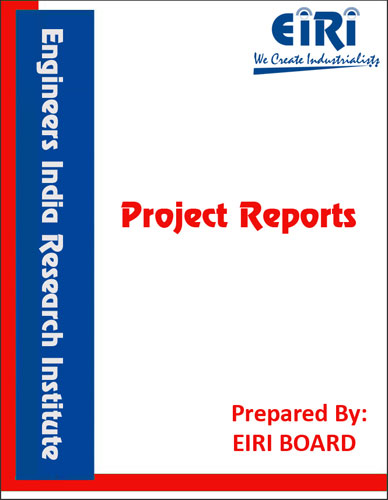The project report includes Present Market Position and Expected Future Demand, Market Size, Statistics, Trends, SWOT Analysis and Forecasts. Report provides a comprehensive analysis from industry covering detailed reporting and evaluates the position of the industry by providing insights to the SWOT analysis of the industry.
Phosphoric acid is an important intermediate chemical product. It is used mainly by the fertilizer industry. In 1980 the world wide production capacity for phosphoric acid yielded about 33 million tons of P2O5 equivalents.
Pure 100% phosphoric acid is a white crystalline solid (monoclinic) that melts at 38.85oC to a syrupy liquid which has a strong tendency to super cool.
In dilute solutions, phosphoric acid has a pleasingly sour taste which is similar to but distinguishable from that citric, tartaric, lactic and acetic acids Rock phosphate is the major and essential raw material required for production as phosphoric acid by any route. Usually, when considering a phosphate rock as a potential raw material, the first approach is to analyze its chemical composition, i.e. the P2O5 content and its impurities.
Phosphoric Acid from Rock Phosphate
Phosphoric acid also known as ortho phosphoric acid (H3PO4) is an important acid, being used, very widely in the ‘Fertilizer Industry (Phosphatic Fertilizers). Phosphatic fertilizers, certainly, affect the growth and contents of agricultural products. Thus, this product is of high level significance.
Phosphoric acid can be manufactured from phosphate rock because of following reasons:
a) Low manufacturing cost
b) Growth of synthetic detergent industry
c) Increased a high level demand in phosphatic fertilizers.
Commercial phosphate ores or “phosphate rocks have one property; its phosphatic content is a phosphate fluorine-calcium combination of apatitic structure. The phosphate rock producers express the content of their products as BPL grade, which is an abbreviation for ‘bone phosphate of lime’ for Ca3(PO4)2. To convert BPL grades into P2O5 equivalent grade, divide by 2.183.
Phosphoric acid can be produced from these raw materials via two major process routes: the wet process, using sulfuric acid attack and the electric furnace process, using electrical energy to product elemental phosphorus as a first stage. Because of current energy prices, the electric furnace process, although it can cope with lower grade phosphate rocks, has been largely abandoned except in cases where elemental phosphorus is needed. The wet process, which is the subject of this book, accounts for 90% of the current phosphoric acid production.
By its nature, wet process technology conserves most of the impurities found in the original phosphate ore, which are then included in the phosphoric acid produced. Consequently, the variety of the phosphage ores influences not only the process used but also the composition and characteristics of the phosphoric acid produced.
Spent phosphoric acid contains Iron as impurity which is removed by solvent extraction process by the addition of methanol (as solvent) and Ammonia.
INTRODUCTION
PROPERTIES & SPECIFICATION OF PHOSPHORIC ACID
PROPERTIES
USES & APPLICATIONS
B.I.S. SPECIFICATION
MARKET SURVEY
IMPORT DATA OF PHOSPHORIC ACID (FOOD GRADE)
IMPORT DATA OF PHOSPHORIC ACID
PRODUCT ACID IMPURITIES
PURIFICATION PROCESS OF SPENT PHOSPHORIC ACID
PROCESS FLOW DIAGRAM
PLANT LAYOUT
PRINCIPLES OF PLANT LAYOUT
PLANT LOCATION FACTORS
EXPLANATION OF TERMS USED IN THE PROJECT REPORT
PROJECT IMPLEMENTATION SCHEDULES
RAW MATERIAL CALCULATION
PURIFICATION OF GREEN PHOSPHORIC ACID TO FOOD GRADE
PHOSPHORIC ACID
PURIFICATION METHODS FOR A PHOSPHORIC ACID ELECTROLYTE
DIFFERENT METHOD FOR PHOSPHORIC ACID PURIFICATION
STORAGE AND HANDLING OF PHOSPHORIC ACID
HEALTH AND SAFETY INFORMATION
TECHNOLOGY SUPPLIERS FOR PHOSPHORIC ACID
SUPPLIERS OF RAW MATERIAL
SUPPLIERS OF PLANT AND MACHINERY
APPENDIX – A:
1. COST OF PLANT ECONOMICS
2. LAND & BUILDING
3. PLANT AND MACHINERY
4. FIXED CAPITAL INVESTMENT
5. RAW MATERIAL
6. SALARY AND WAGES
7. UTILITIES AND OVERHEADS
8. TOTAL WORKING CAPITAL
9. COST OF PRODUCTION
10. PROFITABILITY ANALYSIS
11. BREAK EVEN POINT
12. RESOURCES OF FINANCE
13. INTEREST CHART
14. DEPRECIATION CHART
15. CASH FLOW STATEMENT
16. PROJECTED BALANCE SHEET



